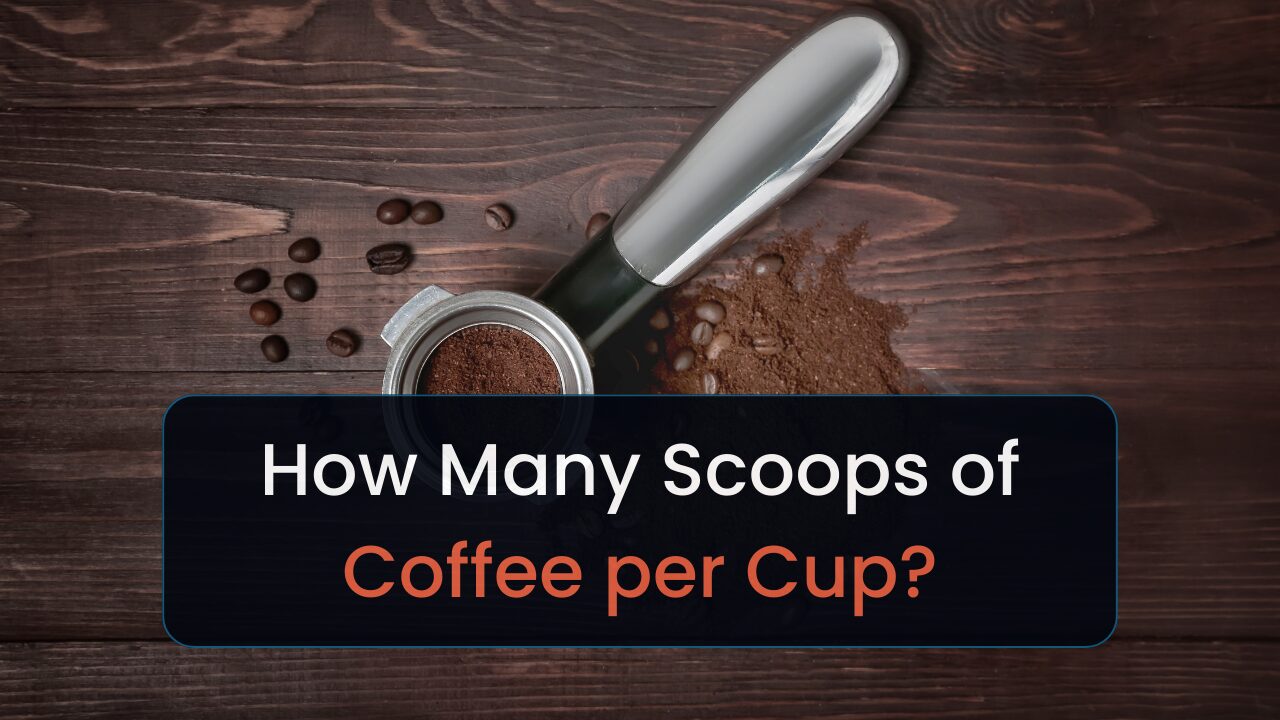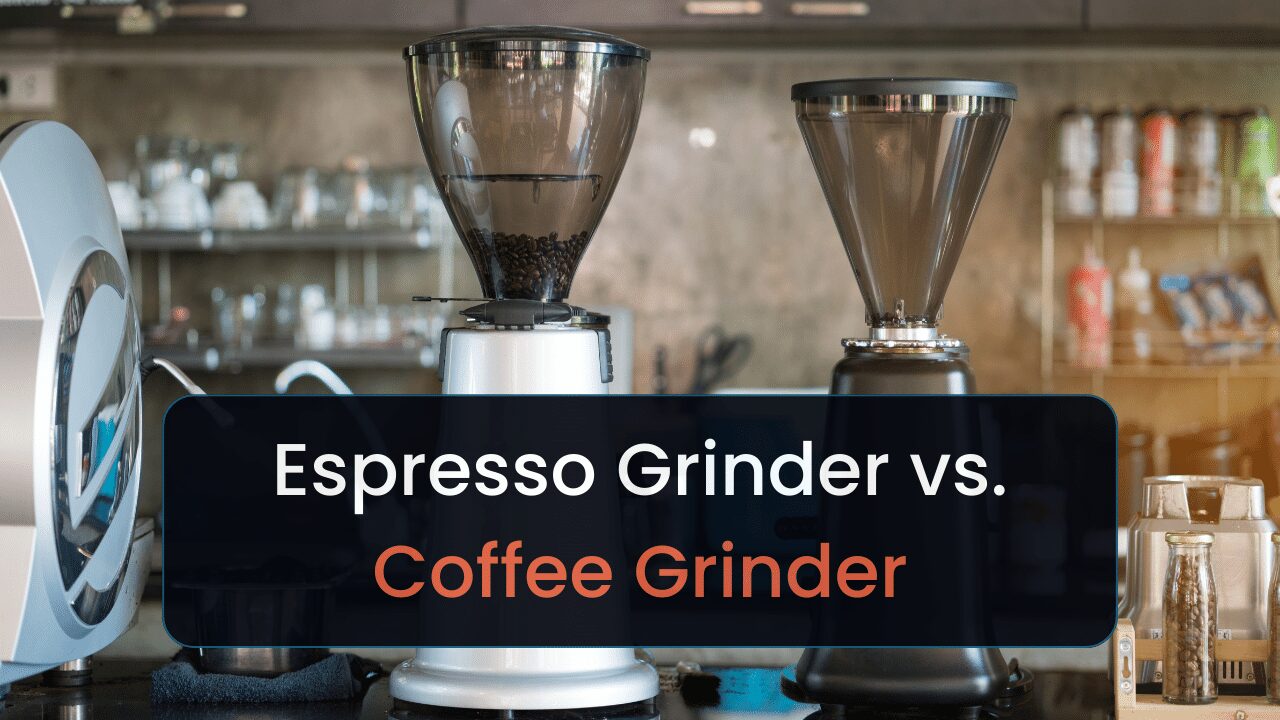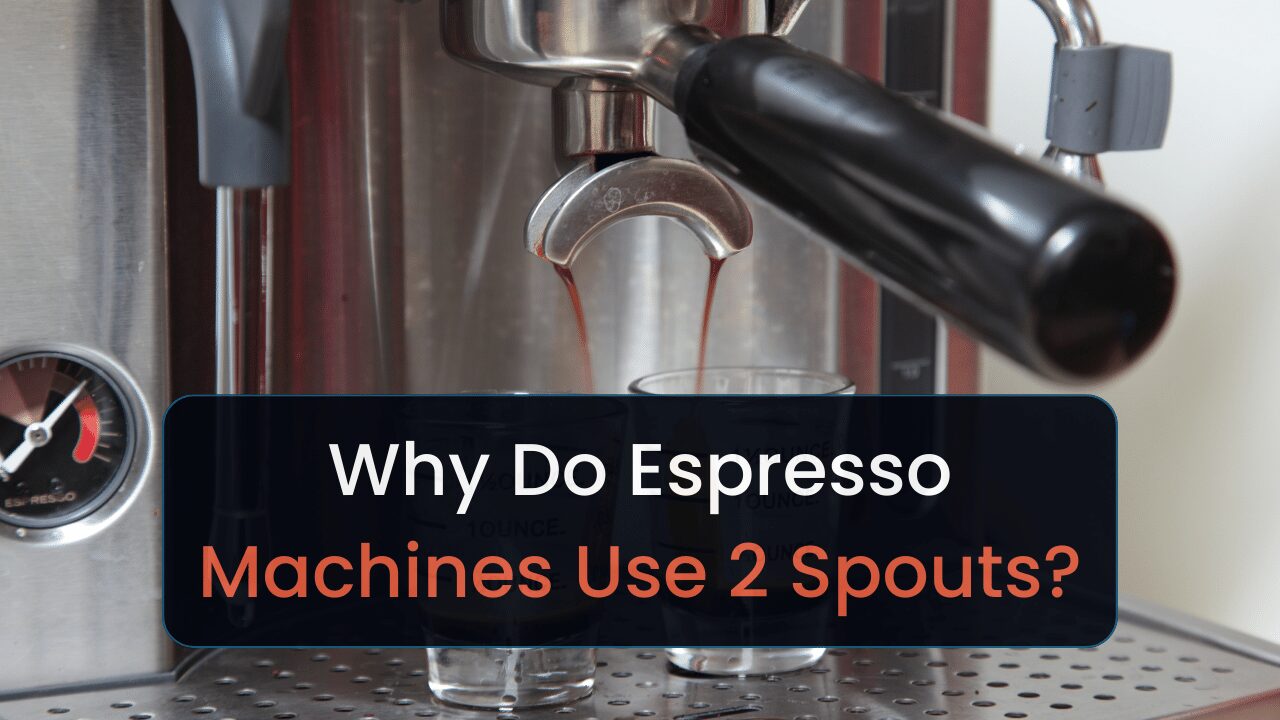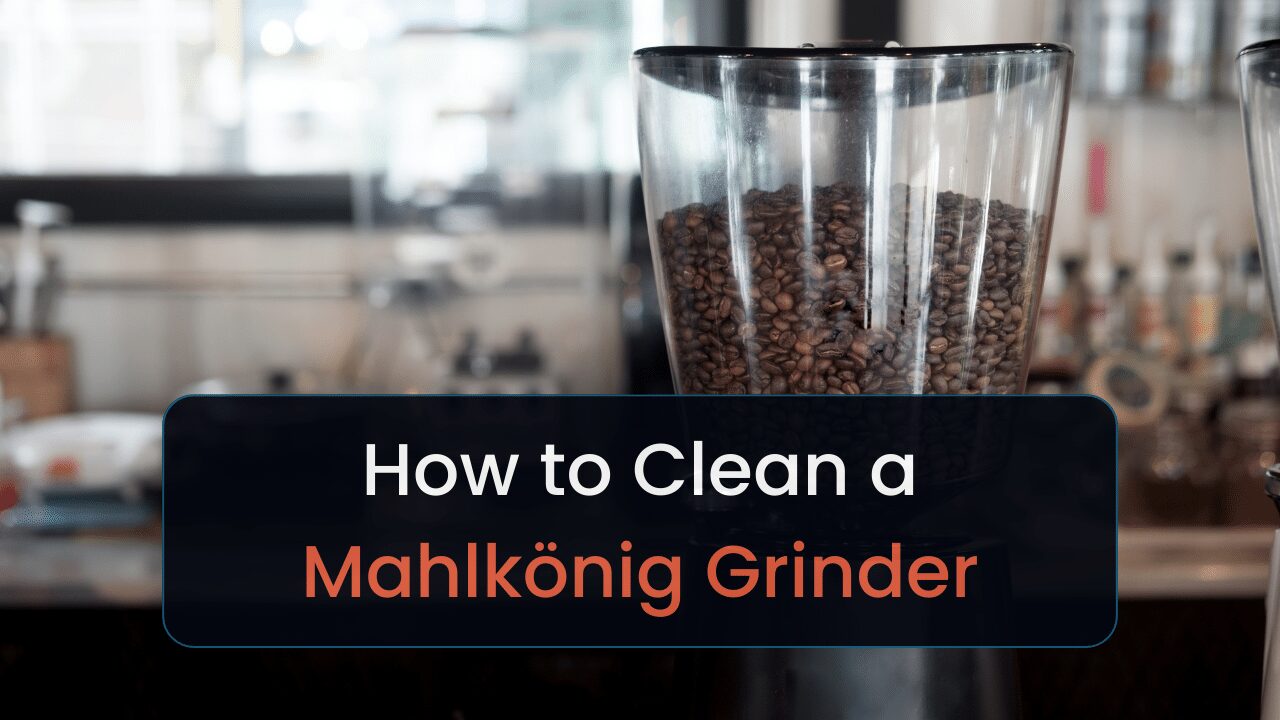I’ve tried coffee drinks from different parts of the world. And it changed the way I enjoy coffee. I want to help you find more coffee drinks, which led me to assemble this piece.
You’ll find the following points throughout this guide:
Let’s hunt for some drinks.
56 Different Types of Coffee Drinks (And Brewing Methods) Explained
Throughout the coming sections, I’ll cover most popular coffee drinks. I’ll talk about what they are, how to make some of them, and provide my experience with a drink when possible.
I’ll also talk about different brewing methods. As they’re critical in determining how your coffee will taste.
Infused Coffee Drinks
Infused coffee is when you use a coffee maker to extract the flavors from coffee grounds. The best part of these types of drinks is that you can tweak any brew to your liking.
Hence, why cold brews are my drink of choice. I’ll emphasize why in a bit.
Think of infused coffee drinks, like steeping tea leaves.
Let’s cover some examples.
1. French Press Drinks
French press coffee is a method of brewing coffee that involves steeping coarsely ground coffee beans in hot water for several minutes. Then pressing the coffee grounds to the bottom of the pot using a plunger.
Café au Lait is an example of a coffee link made from French-pressed coffee. Make it with 5 oz (189 g) of french pressed coffee with 5 oz of scalded milk.
2. Drip/Filtered Coffee Drinks
Drip coffee involves pouring hot water over coffee grounds stuffed in a filter. As the water passes through the filter, it extracts the flavor and oils from the coffee and drips into a carafe or mug.
3. Cold Brew Drinks
Make cold brew coffee by steeping coffee grounds in cold water for an extended period (12–24 hours). The infusion results in a smooth, less acidic, and slightly sweeter coffee drink.
Enjoy cold brews more by adding milk and sweeteners.
4. Flash Brew Drinks
Flash brew is a Japanese-style iced coffee that someone brewed hot and then rapidly cooled. This process locks in the coffee’s flavor and aroma. And produces a bright, clean, and full-bodied coffee with a subtle sweetness.
Boiled Coffee Drinks
The process of boiling coffee involves mixing ground beans with boiling water. And it supposedly lessens the acidity in coffee beans [1]. Making it a friendlier option for folks with acid reflux and other gastrointestinal disorders.
5. Turkish Coffee Drinks
This Turkey-based beverage is a traditional style of coffee preparation made by boiling finely ground coffee beans in a cezve/Ibrik. It’s a small copper or brass pot.
The coffee has a robust and rich flavor since it’s unfiltered.
6. Green Coffee Drinks
Green coffee refers to unroasted coffee beans that have not undergone the roasting process. Baristas and coffee enthusiasts often use these beans for specialty coffee production due to their milder (and lighter) flavor profile than roasted coffee.
To make green coffee, soak unroasted coffee beans in water overnight, then boil the mixture for 15–20 minutes and strain before serving.
7. Percolated Coffee Drinks
Percolated coffee is a method of brewing that involves cycling hot water through the coffee grounds in a perforated chamber, often using gravity or pressure. This method can produce a robust and full-bodied coffee with a distinctive flavor profile.
8. Moka Coffee Drinks
Make a moka coffee by brewing ground coffee beans in a stovetop moka coffee maker. The moka pot (coffee maker) uses steam pressure to extract the coffee flavor and produce a strong and rich brew.
9. Vacuum Coffee Drinks
Vacuum (siphon) coffee uses a sealed brewing process that prevents any aroma or flavor from escaping. The sealed container produces a clean, pure coffee taste without bitterness or sediment. Making it one of the most refined and flavorful ways to brew coffee.
Espresso-Based Drinks
An espresso-based drink involves adding varying amounts of espresso shots to other ingredients.
Here are a bunch of espresso-based drinks:
| Coffee Drink | Ingredients |
| Americano | Espresso shots, hot water |
| Doppio | Double shot of espresso |
| Latte | Espresso, steamed milk, milk foam |
| Red Eye | Coffee, espresso |
| Black Eye | Coffee, double shot of espresso |
| Dripped Eye | Coffee, triple shot of espresso |
| Lazy Eye | Coffee, quadruple shot of espresso |
| Cappuccino | Espresso, steamed milk, milk foam |
| Manilo Long Black | Espresso, hot water, lemon peel |
| Flat White | Espresso, microfoam (steamed milk with small, fine bubbles) |
| Cubano | Espresso, demerara sugar |
| Café Crema | Espresso, hot water, crema (a layer of foam that forms on top of the espresso due to pressurized brewing) |
| Zorro | Doppio, hot water, steamed milk |
| Cortado | Espresso, steamed milk, small amount of milk foam |
| Café Breve | Espresso, steamed half-and-half |
| Espresso Romano | Espresso, lemon peel |
| Guillermo | Mocha, orange peel |
| Irish Coffee | Coffee, Irish whiskey, sugar, heavy cream |
| Vienna Coffee | Espresso, whipped cream, chocolate shavings |
| Galão | Espresso, steamed milk, foam |
| Macchiato | Espresso, dollop of milk foam |
| Long Macchiato | Double espresso, dollop of milk foam |
| Mocha | Espresso, chocolate syrup, steamed milk, milk foam |
| Marocchino | Espresso, cocoa powder, steamed milk, milk foam |
| Rápido y Sucio | Espresso, Mexican coffee liqueur |
| Freddo Cappuccino | Espresso, cold milk, ice cubes, milk foam |
| Affogato al Caffe | Espresso, vanilla ice cream |
| Café Medici | Double espresso, orange peel, chocolate syrup, whipped cream |
Ingredients in popular espresso-based drinks compared.
This list is likely missing a bunch of espresso-based drinks. But I pulled together most of the well-known ones.
10. Americano
- Ratio:
- 1 shot of espresso
- 3 oz (88 ml) hot water
- Cup: 5–6 oz (141–170 g) glass coffee mug
A coffee drink made by adding hot water to a shot of espresso, resulting in a coffee with a similar strength to drip coffee but a distinct espresso flavor.
11. Latte
- Ratio:
- 1 shot of espresso
- 8–10 oz (236–295 ml) of steamed milk
- 1 cm of foam
- Cup: 14 oz (529 g) mixing glass
A latte is a coffee drink made with a shot of espresso and steamed milk, topped with a layer of foam. Add more flavor to a latte by sprinkling in spices—e.g., pumpkin spice or star anise—or syrups.
Some sources state that this is the most popular drink in the United States and the United Kingdom. Though, I’m skeptical.
12. Red Eye
- Ratio:
- 1 shot of espresso
- 6 oz (177 ml) drip-brewed coffee
- Cup: 8–10 oz (226–283 g) coffee mug
A red eye is a coffee drink made by adding a shot of espresso to a cup of drip coffee. It’s also known as a “shot in the dark” and has a stronger caffeine content than regular coffee.
13. Black Eye
- Ratio:
- 2 shots of espresso
- 6 oz drip-brewed coffee
- Cup: 8–10 oz coffee mug
A Black Eye is the same as a Red Eye, but with double the number of shots.
14. Dripped Eye
- Ratio:
- 3 shots of espresso
- 6 oz drip-brewed coffee
- Cup: 8–10 oz coffee mug
Dripped eye—otherwise known as Dead Eye Coffee—is the same as Black Eye and Red Eye, but more potent due to the extra shot.
15. Lazy Eye
- Ratio:
- 1 shot of espresso
- 6 oz decaffeinated drip coffee
- Cup: 8–10 oz coffee mug
The Lazy Eye works best for those who need a pick-me-up, but want a less caffeinated alternative to the Dripped, Red, and Black Eyes.
16. Cappuccino
- Ratio:
- 1–2 shots of espresso
- 2 oz (59 ml) steamed milk
- 2 oz of foamed milk
- Sprinkle of chocolate powder (optional)
- Cup: 6–8 oz (170–226 ml) cappuccino mug
A cappuccino is a coffee drink made with espresso, steamed milk, and foam and served in a smaller cup.
It has a strong espresso taste and a velvety texture.
17. Manilo
- Ratio:
- 1 shot of espresso
- 3 oz (88 ml) milk
- Cup: coffee mug
A manilo coffee has milk and espresso. There’s not much else to say about this drink.
18. Long Black
- Ratio:
- 2 shots of espresso
- 3 oz hot water
- Cup: 6–8 oz glass coffee mug
A long black is a coffee beverage that’s made by pouring a shot of espresso over hot water. This results in a strong and bold coffee flavor, while preserving the crema layer on top of the espresso shot.
19. Flat White
- Ratio:
- 1 shot of espresso
- 4 of steamed milk
- Cup: 6 oz (170 g) glass tumbler
A flat white coffee drink is made with espresso and steamed milk. It’s similar to a latte but with a smaller amount of milk and a more velvety texture. The drink supposedly originated in Australia. However, New Zealand also claims to have made it [2].
20. Cubano
- Ratio:
- 1 shot of espresso
- 4 tablespoons granulated sugar
- Cup: ceramic demitasse cup
A Cuba-based drink made with demerara sugar and a small amount of milk.
It’s also known as a “Cuban espresso” or “cafecito.”
21. Café Crema
- Ratio:
- 3–6 shots of espresso
- 2 tablespoons flour
- 2 cups (473 ml) whole fat milk
- 2 tablespoons (28.3 g) sugar
- Cup: Italian espresso cup
This Switzerland-based drink has a strong, creamy flavor and a long extraction process.
Don’t confuse café crema with the cream you’d see on top of an espresso shot (crema).
22. Zorro
- Ratio:
- 2 shots of espresso
- Equal parts hot water
- Cup: coffee mug
Make a zorro coffee drink by adding hot water to a double shot of espresso. This marriage results in a long black coffee with a strong flavor. It’s similar to an Americano, but with a higher concentration of espresso.
Zorro drinks have a 1:1 ratio of espresso and water.
23. Cortado
- Ratio:
- 1 shot of espresso
- 1 oz warm milk
- 1 cm of foam
- Cup: 5 oz (141 g) rocks glass
A cortado is a coffee drink made with a shot of espresso and an ounce of steamed milk, creating a smooth, balanced taste with a creamy texture. It’s similar to a latte but has less milk and a more robust espresso flavor.
24. Café Breve
- Ratio:
- 1 shot of espresso
- 3 oz (113.4 g) steamed half-and-half
- 1 cm of foam
- Cup: 5–7 oz (141–198) low cup
Café breve is a latte made with half-and-half instead of milk and topped with a layer of foam. This combination creates a creamy and rich drink.
25. Espresso Romano
- Ratio:
- 1–2 shots of espresso (your choice)
- 1 lemon slice
- 1 teaspoon (4.2 g) sugar
- Cup: 3 oz (113 g) glass espresso cup
An Espresso Romano is a type of coffee made with a shot of espresso and a twist of lemon. It’s typically served without milk or sugar.
26. Guillermo
- Ratio:
- 1 shot of espresso
- 1–3 lime slices
- Cup: 3 oz glass espresso cup
A Guillermo coffee drink is a specialty coffee beverage consisting of hot water and slices of lime, then topped with espresso shots. The lime adds a citrus flavor to the coffee and enhances its sweetness.
27. Irish Coffee
- Ratio [3]:
- 2 shots of espresso
- 3 tablespoons Irish whiskey
- 1 tablespoon (15 g) cane sugar
- 3 tablespoons (45 g) fresh heavy cream
- Cup: 6–8 oz Irish coffee mug
Irish coffee is a cocktail consisting of hot coffee, Irish whiskey, sugar, and topped with cream.
28. Vienna Coffee
- Ratio:
- 1–2 shots of espresso
- 2 oz whipped cream
- Cup: 4–5 oz espresso mug
A Vienna coffee is a combination of strong coffee, whipped cream, and sometimes chocolate shavings or syrup. It’s similar to a latte, but with whipped cream instead of steamed milk.
29. Galão
- Ratio:
- 1 shot; extend extraction time until you have 1.5–2.0 oz of coffee
- ¾ cup (177 ml) frothed milk
- Cup: coffee mug
A Portuguese-based coffee drink consisting of espresso and steamed milk, typically served in a tall glass with a ratio of 1:3 espresso to milk.
30. Macchiato
- Ratio:
- 1 shot of espresso
- 1–2 teaspoons (4.2–8.4 g)steamed milk
- Cup: 3 oz glass espresso cup
A macchiato consists of a shot of espresso with a small amount of foamed milk added on top. It’s similar to a cortado, but with less milk.
31. Long macchiato
- Ratio:
- 2 shot of espresso
- 2–4 teaspoons steamed milk
- Cup: 5 oz rocks glass
A long macchiato differs from a macchiato because it has double the ingredients.
32. Mocha/Mochaccino
- Ratio:
- 1 shot of espresso
- 1–2 oz chocolate syrup or powder
- 1–3 oz steamed milk
- 2–3 cm of foam or whipped cream
- Cup: 6–8 oz Irish coffee mug
Make a mocha by combining espresso and chocolate and is often topped with whipped cream and cocoa powder.
Enjoy it searing hot or chilled.
33. Marocchino
- Ratio:
- 2 shots of espresso
- 2 tsp cocoa powder
- 3–5 oz (88–147 ml) milk
- Cup: 2 oz shot glasses
Marocchino is an Italian espresso-based coffee drink typically consisting of a shot of espresso, frothed milk, and cocoa powder or chocolate syrup.
The espresso, milk, and chocolate layers create a distinctive visual appeal in the tiny glass it’s served in.
34. Rápido y Sucio
- Ratio:
- 3 shots of espresso
- Chocolate or mocha syrup
- Cup: 5–7 oz low cup
Add 3 or more shots to this drink, and it turns into a Fast & Filthy Coffee.
35. Freddo Cappuccino
- Ratio:
- 2 shots of espresso
- Nonfat milk
- Granulated sugar
- Cup: coffee mug
Freddo Cappuccino is a cold coffee beverage that originated in Greece. Make it by blending espresso with cold milk and ice, and is typically topped with a layer of foam.
36. Affogato al Caffè
- Ratio:
- 1–2 shots of espresso
- 1 scoop vanilla ice cream
- Cup: 5–7 dessert dish
Affogato al Caffe is an Italian dessert that consists of a scoop of vanilla ice cream or gelato with a shot of hot espresso poured over it.
37. Café Medici
- Ratio:
- 2 shots of espresso
- Orange peel
- Chocolate syrup
- Whipped cream
- Cup: coffee mug
Café Medici is a coffee drink similar to a cappuccino but with a double shot of espresso and chocolate syrup.
Want to get more creative with making it? Top the Medici with steamed milk and a sprinkle of cocoa powder or cinnamon.
38. Pocillo
- Ratio:
- 1 shot of espresso
- Cup: 2–3 oz coffee mug
Pocillo coffee is a small serving of strong coffee popular in Spain and Latin America. It’s a lovely pick-me-up that doesn’t require much work due to the lack of ingredients.
39. Coffee with Tea
Coffee with tea, also known as Yuanyang or Hong Kong-style coffee, is a popular beverage in Asia made by mixing coffee with tea. The result is a sweet and creamy drink with a unique flavor profile that combines the richness of coffee with the subtle aroma of tea.
Feel free to mix coffee with different types of tea.
And how do you make a Hong Kong-style coffee?
Mix 1 cup (236 ml) of milk tea—tea plus milk—and 1 cup of brewed coffee.
40. Liqueur Coffee Drinks
Liquor coffee is an alcoholic beverage made by adding a shot of liquor, such as brandy, whiskey, or Kahlúa, to a cup of coffee. It’s a popular after-dinner drink often served with whipped cream or a sprinkle of cocoa powder.
41. Coffee with Condensed Milk
This type of drink includes adding sweet and condensed milk to coffee brewed in any manner. For instance, adding it to infused or boiled coffee.
Vietnamese iced coffee (Cà Phê Sữa Đá’) is an example of coffee with condensed milk. Many folks tend to use robusta beans. But it doesn’t matter what bean type you use.
To make this drink in specific, follow these steps:
- Fill part of your glass with ice
- The amount doesn’t matter
- 3 tablespoons of sweet condensed milk in a glass
- Glass type doesn’t matter, so long as it fits the brewer
- Mix the ice & milk
- Mount a Vietnamese coffee maker (phin) over your glass & pour over your coffee
- Mix the coffee and milk
This is my favorite coffee, and I got it 2–3 times a day when I was in Vietnam. I highly recommend getting the Starbucks Reserve Vietnam Da Da Lat beans if making this coffee. Da Lat is an area in Vietnam known for its coffee.
Another example of a drink with condensed milk is the Kopi. It’s supposedly the “national drink” of Singapore. And is prepared with condensed milk and sugar.
Flavored Coffee Drinks
Flavored coffee drinks add spices or other ingredients to brewed coffee or espresso. You could consider some drinks like the Melya as an espresso-based drink. But in this case, I’m not.
I’ll cover different flavored drinks and how to make some of them below.
42. Melya
Common ingredients:
- ¼–⅓ cup espresso
- Honey
- Steamed milk
- Cream
- Cocoa powder
The melya is a dessert drink that combines espresso with cream, honey, milk, and cocoa.
43. Café Miel
Common ingredients:
- Ground cinnamon
- Whole milk
- Brewed coffee (or espresso)
- Honey
Spain’s Café con Miel—Spanish coffee with honey—has honey, coffee, whole milk, and cinnamon.
44. Café de Olla
Common ingredients:
- Cinnamon sticks
- Star anise
- Cloves
- Piloncillo or brown sugar
Café de Olla is a traditional Mexican coffee beverage brewed with cinnamon sticks and piloncillo (unrefined cane sugar). It’s typically served hot and known for its rich, spicy, and slightly sweet flavor.
Iced Coffee or Chilled Drinks
Iced coffee drinks involve pouring hot coffee over ice cubes and other ingredients. These drinks have the same amount of caffeine as hot coffee. But it isn’t the same as cold brew.
Since you let cold brew sit overnight,
45. Frappé & Frappuccino
Common ingredients:
- Brewed or instant coffee
- Milk
- Whipped cream
- Sugar
Frappé is a Greek iced coffee beverage made by blending instant coffee, sugar, and water with ice until frothy. Serve it in a tall glass and customize it with milk or other flavorings like pistachio, caramel, and more.
Don’t confuse a Frappé with a Frappuccino, though. The latter uses brewed coffee instead of instant.
46. Nitrous Coffee
Nitrous coffee, or nitro coffee, is cold-brew coffee infused with nitrogen gas, giving it a creamy texture and a smooth, velvety mouthfeel.
Adding nitrogen under high pressure to the cold coffee creates a cascading effect and a creamy head similar to a beer’s.
The result is a refreshing and unique coffee experience often served on tap, similar to beer.
47. Mazagran
This Algeria-based drink combines sweetened cold coffee with lemon slices and sometimes rum. It’s a refreshing drink known for its tangy flavor.
48. Instant Coffee
Instant coffee is freeze-dried in crystallized or powdered forms from brewed coffee beans.
Mix the powder (or crystals) with hot milk or water. And once the granules dissolve, you’ll have a cup of coffee ready to drink in fewer than 10 minutes.
It doesn’t taste the best, but it’s a great way to make coffee at your desk or on the go without having to brew a drink.
It seems like instant coffee (specifically Kopiko) is popular in the Philippines. Though, instant coffee is a go-to in many countries.
49. Decaffeinated Drinks
Decaffeinated coffee is a type of coffee that has had most of its caffeine removed through a decaffeinating process. This process can use various methods, including solvent-based or water-based techniques.
Decaffeinating removes around 97% of the caffeine from coffee beans [4]. The Swiss Water decaffeination process supposedly removes 99.9% of caffeine [5].
50. Indian Filter Coffee Drinks
Indian filter coffee is a popular South Indian coffee preparation method using stainless steel or brass.
The filter consists of two cylindrical cups:
- One with small holes in the bottom
- The other with a perforated bottom
You’d place coffee beans in the upper cup and pour hot water over them.
The coffee drips through the filter into the lower cup, producing a strong and flavorful brew. From there, serve the drink with hot, frothed milk and sugar.
Think of it like a manual drip coffee maker.
51. Egg Coffee
Egg coffee comes from Hanoi, Vietnam and is a drink that adds onto coffee with condensed milk by adding egg yolks and sugar.
I never had this during my time in Vietnam. But I suppose it’s a good way to get extra protein into your diet.
52. Double-Double
Double-double is coffee with 2 sugar shots, 2 cream shots, and brewed coffee. But it’s only something you’ll find in Tim Hortons restaurants throughout Canada.
53. Coffee Milk
Think of coffee milk as milk with coffee syrup instead of chocolate. It doesn’t come from coffee cows, unfortunately.
And you won’t see this coffee in the wild much. Coffee milk brands are Autocrat, LLC (Rhode Island brand) and Farmers union Iced Coffee (Australia).
54. Canned Coffee
Canned coffee is pre-packaged coffee sold in a can.
It’s usually made with instant coffee and sweetened with sugar or syrup. It’s a popular convenience drink in many countries, particularly in Asia, and found in vending machines, convenience stores, and supermarkets.
You’ve likely seen cans of Starbucks Doubleshot Energy filling shelves at the supermarket. Or you may find yourself buying unknown brands at Korean supermarkets like me.
55. Café Touba
Café Touba is a popular coffee beverage in Senegal. Make it by adding grains of Selim, a type of African pepper, to coffee beans during the roasting process. This combination gives the coffee a distinctive, spicy flavor and aroma.
56. Fermented Coffee Drinks
Fermented (or cultured) is a type of coffee that undergoes a controlled fermentation process before roasting.
Wet or dry fermentation can transform the flavor and aroma compounds in the coffee beans while stored in large tanks or containers.
It’s not a specialized drink like mocha or latte, but it’s a different way to drink coffee.
Different Types of Coffee Beans Compared
Various coffee beans will affect your drink’s flavor. Let’s compare them:
| Coffee Bean Type | Flavor |
| Arabica | Sweet & smooth |
| Robusta | Bitter & strong |
| Liberica | Smoky |
| Excelsa | Fruity |
Different types of coffee beans compared.
Types of Coffee Bean Flavors Compared
Here are some of the most common coffee bean flavors you’ll encounter:
- Fruity: fruity notes such as berries and tropical fruits
- Floral: hints of flowers & leaves in the coffee’s taste and aroma
- Roasted: these flavors come to when combining various flavor notes (e.g., spices & nuts)
- Bitter: usually has more caffeine
- Sweet: manufacturers add sweet flavors like caramel & molasses during the roasting process
FAQs
Keep reading to find frequently asked questions about different types of coffee drinks.
What Are Specialty Coffee Drinks?
Specialty coffee drinks are high-quality beverages made with artisanal techniques using carefully sourced and roasted coffee beans.
An example of a specialty coffee drink is a pour-over coffee made with a single-origin, small-batch coffee bean and brewed using precise techniques.
What Type of Coffee Is Sweetest?
The sweetness of coffee depends on its natural sugar content and bitterness level.
How Many Types of Coffee Drinks Are There in the World?
Hundreds of different types of coffee drinks exist. Whether they’re espresso-based or use infused coffee.
What Is the Difference Between a Latte and a Cappuccino?
A latte has espresso, steamed milk, and a small amount of foam. A cappuccino has equal parts espresso, steamed milk, and foam.
What Is an Americano?
An Americano is a coffee drink made by diluting espresso with hot water, resulting in a similar strength to a regular drip coffee.
What Is the Difference Between a Macchiato and a Cortado?
A macchiato has espresso and a small amount of foam, while a cortado has espresso and roughly equal parts steamed milk. Macchiatos have a more robust coffee flavor and less milk, while cortados are creamier and milder.
Conclusion
Who would have thought that many types of coffee drinks exist. Most of them are espresso-based. But many come from different brewing methods (boiling versus vacuum coffee).
Dive deeper into the rabbit hole.
We’ve compared the best coffee beans in a separate piece. Check them out and find out how to take your drink-making-skills to the next level.






